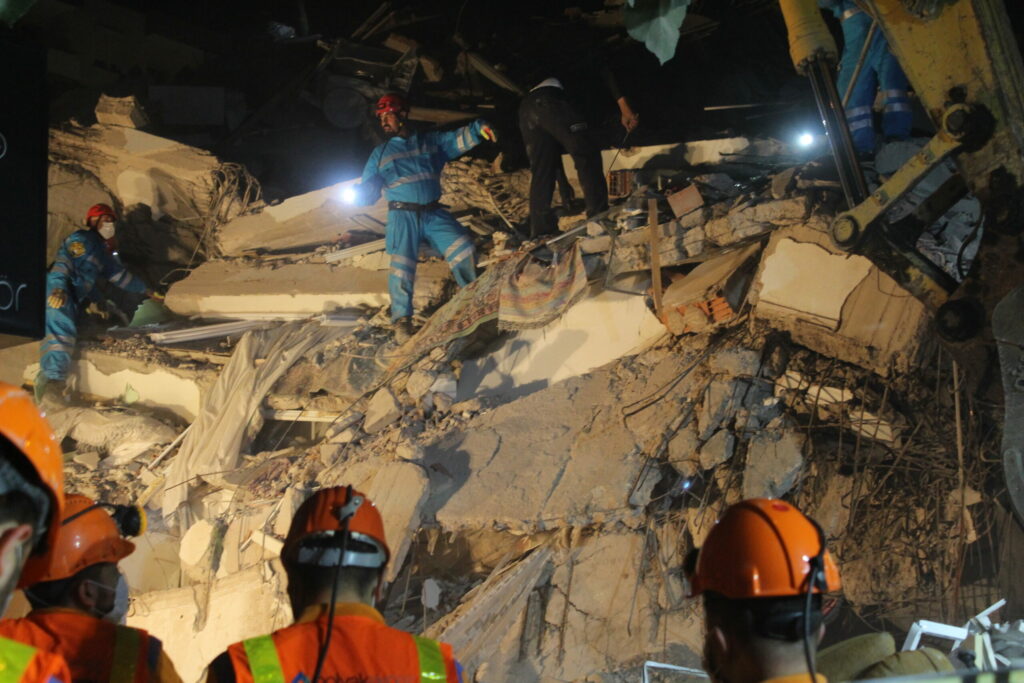Chapter 6 Earthquakes
Learning Objectives
After having carefully read this chapter and completed the exercises within it and the questions at the end, you should be able to:
- Explain how the principle of elastic deformation applies to earthquakes,
- Describe how the main shock and the immediate aftershocks define the rupture surface of an earthquake, and explain how stress transfer is related to aftershocks,
- Explain the process of episodic tremor and slip,
- Describe the relationship between earthquakes and plate tectonics, including where we should expect earthquakes to happen at different types of plate boundaries, and at what depths,
- Distinguish between earthquake magnitude and intensity, and explain some of the ways of estimating magnitude,
- Explain the importance of collecting intensity data following an earthquake,
- Describe the origins of the various impacts of earthquakes, including destruction to buildings and other infrastructure, fires, slope failures, liquefaction, and tsunami, and
- Discuss the value of earthquake predictions, and describe some of the steps that governments and individuals can take to minimize the impacts of Large earthquakes.
Earthquakes scare people … a lot! That’s not surprising because time and time again earthquakes have caused massive damage and many, many casualties. The magnitude 7 Aegean Sea earthquake of October 2020 (Figure 6.0.1) is a good example. There was heavy damage in the Izmer region of Turkey and 117 people in that area died, while over 1000 were injured.[1] As described in Section 6.4, Turkey has been very hard hit by earthquakes in the past several decades, and it’s understandable for people to be concerned.

We are getting better at understanding earthquakes and minimizing the amount of damage they cause and the number of people killed and injured. Although it doesn’t really help for people living in earthquake prone regions to be frightened by earthquakes, it does help if they are personally prepared, and if their governments engage in serious efforts to understand the underlying geology and seismology so that they can minimize their earthquake risks.
Media Attribution
- Figure 6.0.1 2020 Aegean Sea Earthquake Search and Rescue by Oğulcan Bakiler, public domain image provided by Voice of America, via Wikimedia Commons, https://commons.wikimedia.org/wiki/File:2020_Aegean_Sea_earthquake_search_and_rescue_efforts_2.jpg
- From Wikipedia article on 2020 Aegean Sea Earthquake: Wikipedia contributors. (2021, October 20). 2020 Aegean Sea earthquake. In Wikipedia. (Accessed October 25, 2021), https://en.wikipedia.org/w/index.php?title=2020_Aegean_Sea_earthquake&oldid=1050888173 ↵

